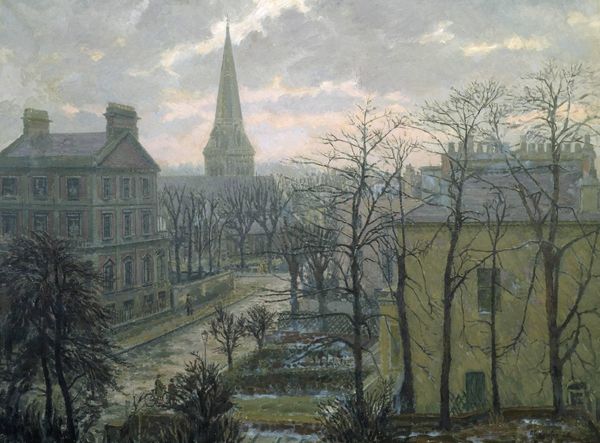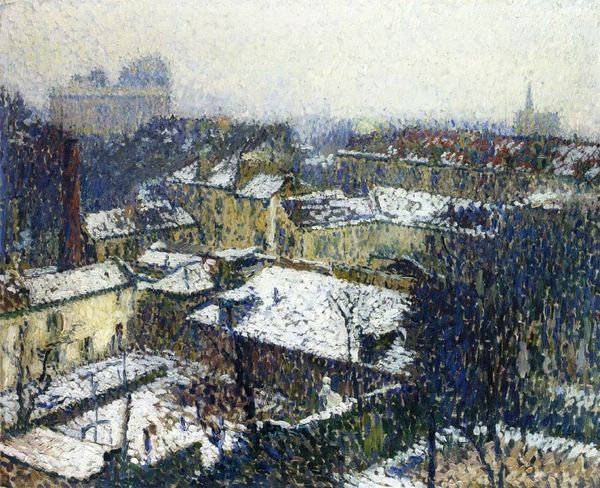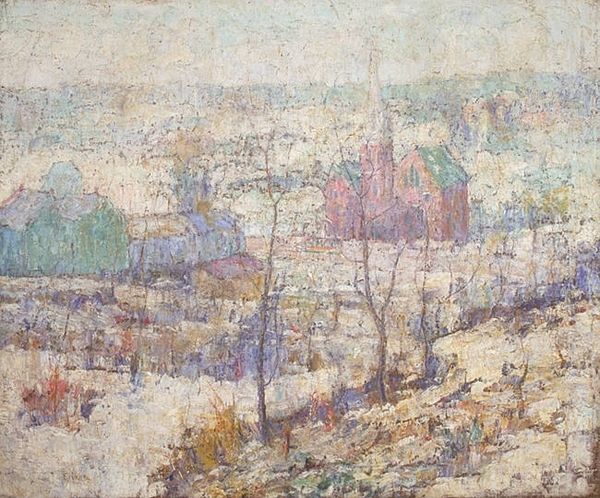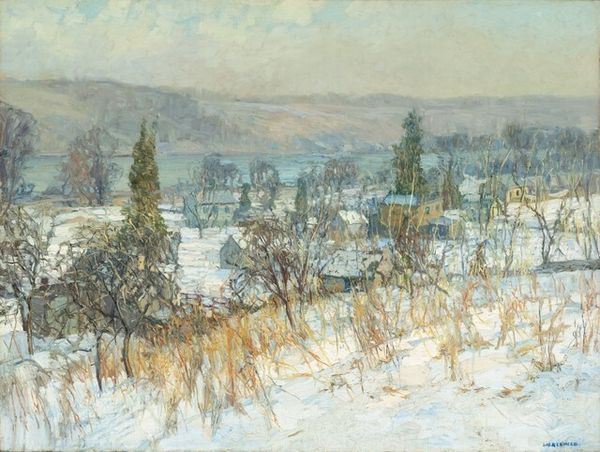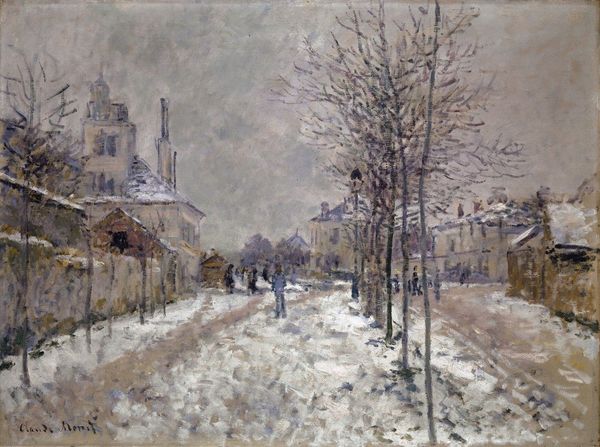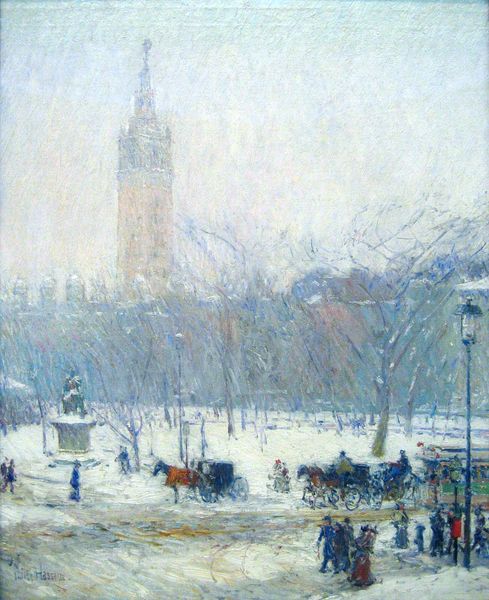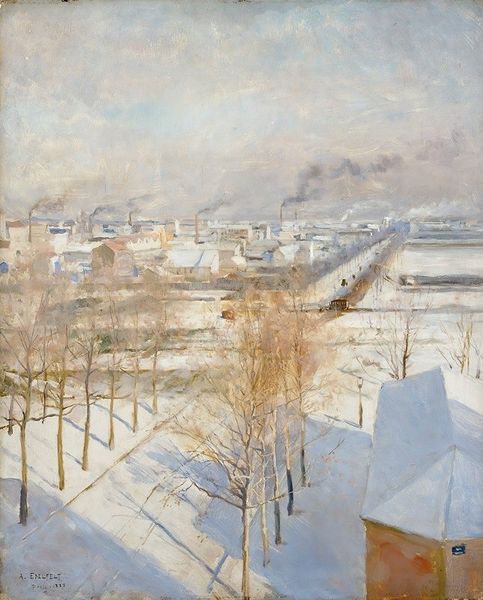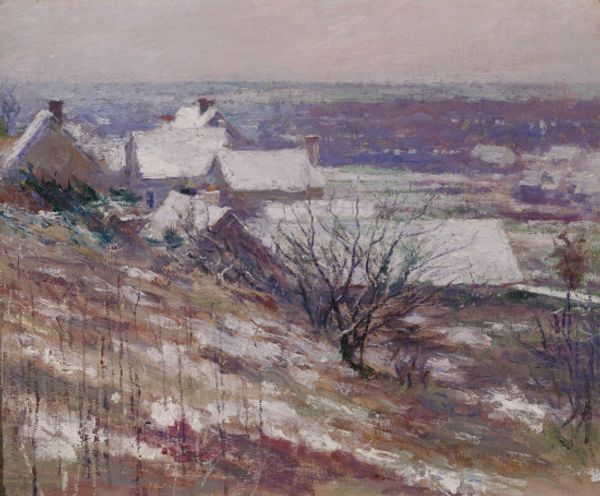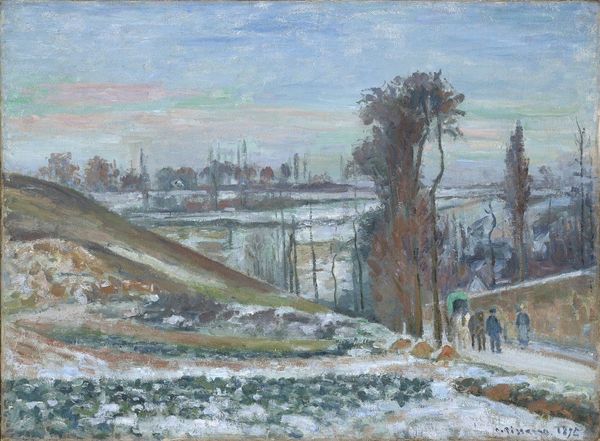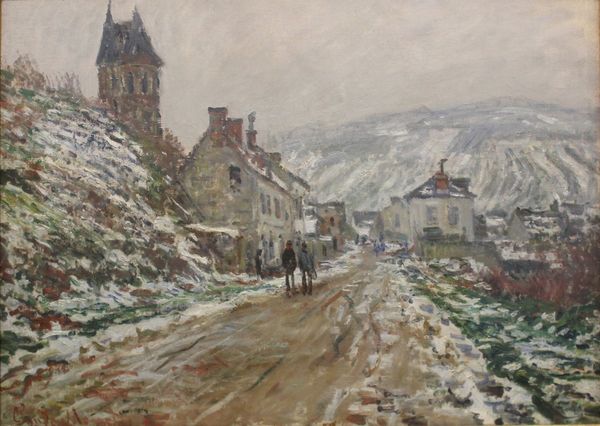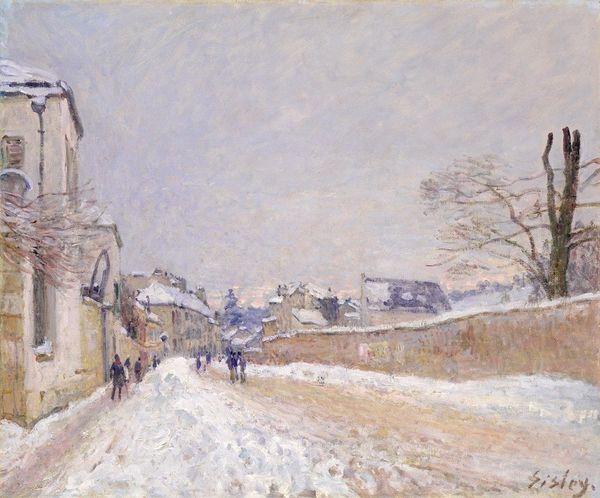
Copyright: Public Domain: Artvee
Editor: This is Carl Moll's "Heiligenstadt im Schnee," painted between 1904 and 1905. It's an oil painting, a snowy cityscape with a prominent church tower. It has a really tranquil, almost melancholic mood, don’t you think? What do you see in this piece, beyond the initial impression? Curator: Beyond the surface beauty, I see a representation of bourgeois life at the turn of the century in Vienna, grappling with rapid change. Moll was part of the Vienna Secession, right? They wanted to break from the conservative art establishment. This painting isn't just a pretty scene; it’s about negotiating tradition, symbolized by the church, and modernity. Do you notice how the composition places the viewer slightly removed, looking down upon the scene? Editor: Yes, there's a definite sense of distance, almost like observing from an elevated position, or like a surveillance angle. Is that distance part of that negotiation you mentioned? Curator: Precisely. It mirrors the bourgeoisie's ambivalent position, clinging to established structures while simultaneously yearning for progress. The snow itself can be interpreted as a blanketing force, both concealing and unifying social realities, potentially speaking to social anxieties around visibility and class. Think of Freud and psychoanalysis gaining traction in Vienna at this very moment... Editor: That makes the tranquility feel much more complex. So the quietness isn't just about the snow; it reflects a certain… tension. The tension of social shifts. Curator: Absolutely. It's an invitation to question the comfortable facade of the Biedermeier era. It is a picture of a city with great social inequalities – what were people’s experience of ‘Heiligenstadt im Schnee’? Who got to stay warm, who had to brave the elements? Even landscape painting isn't neutral, and Moll’s relationship to both tradition and revolt invites us to explore those nuances. What do you make of his use of muted colour? Editor: I hadn't considered all those layers beneath the surface. I was drawn to the colours, thinking of Impressionism... I guess it's never just "a pretty picture," is it? Curator: Never! And isn’t it exciting that it never is?
Comments
No comments
Be the first to comment and join the conversation on the ultimate creative platform.
